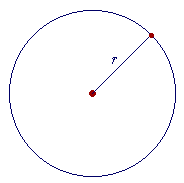Variation: Section 2
Varies inversely
We say that a quantity a varies inversely as a quantity b, if, when b changes, a changes in the inverse ratio.
This means that if b doubles, then a will become half as large. For the inverse of the ratio 2 to 1 ("doubles") is the ratio 1 to 2 ("half"). The terms are exchanged; the inverse of the ratio a : b is the ratio b : a. (See Lesson 17 of Arithmetic, and Problem 1 of that Lesson.)
When a varies inversely as b, we say that a is inversely proportional to b.
Example. Suppose that the time it takes to do a job is inversely proportional to the number of workers. The more workers, the shorter the time.
Specifically: If 2 workers can do a job in 9 days, then how long will it take 6 workers?
Answer. The number of workers has tripled, going from 2 to 6. Therefore it will take only a third as many days. It will take only 3 days.
Problem 12. If you travel at a speed of 40 mph, it takes you 25 minutes to get to your destination. How fast would you have to travel to get there in 20 minutes?
(Hint: Speed is inversely proportional to the time traveled. The faster you travel, the shorter the time.)
The travel time has changed to four fifths of the original. (20 is four fifths of 25.) Therefore the speed must change inversely, that is, in the ratio of 5 to 4, which is one and a quarter times. One and a quarter times 40 is 40 plus 10: 50 mph.
Problem 13. a varies inversely as b. When b = 7, a = 12. What is the value of a when b = 28?
To see the answer, pass your mouse over the colored area.
To cover the answer again, click "Refresh" ("Reload").
Do the problem yourself first!
In going from 7 to 28, b has increased four times. Therefore inversely, a will be one fourth as large. One fourth of 12 is 3.
Problem 14. a varies inversely as b. When b = 6, a = 10. What is the value of a when b = 4?
a = 15. For, in going from 6 to 4, the value of b became two thirds of its original. 4 is two thirds of 6. Therefore, the value of a will be one and a half times its original. (The inverse of 2 to 3 -- "two thirds" -- is the ratio of 3 to 2: "one and half times.") One and half times 10 = 10 + 5 = 15.
When a varies inversely as b, their relationship has this algebraic form:
| a | = | k b |
To solve the previous problem algebraically, we can find k by plugging-in the initial values 10 and 6:
| 10 | = | k 6 |
Therefore, k = 10· 6 = 60. The formula is:
| a | = | 60 b |
Hence, when b = 4:
| a | = | 60 4 |
= | 15. |
Please. Make an effort to understand ratios, rather than having to resort to algebra.
Varies as the inverse square
A quantity a varies as the inverse square of a quantity b, if, when b changes, a changes by the square of the inverse ratio.
Thus if the value of b doubles , that is, changes in the ratio 2 to 1, then the value of a will be one fourth as large -- it will change in the ratio 1² to 2², which is 1 to 4.
Problem 15. a varies as the inverse square of b. When b = 15, a = 7. What is the value of a when b = 3.
In going from 15 to 3, the value of b became one fifth of its original. 3 is one fifth of 15. Therefore, the value of a will be twenty-five times its original. 25· 7 = 175.
(The inverse of 1 to 5 -- "one fifth" -- is the ratio of 5 to 1. The square of that is 25 to 1: "twenty-five times.")
When a varies as the inverse square of b, then their relationship has this algebraic form:
| a | = | k b² |
The most famous instance of this is Newton's law of gravity. It states that the force F of gravitational attraction between two masses varies as the inverse square of the distance r between them.

| F | = | k r² |
(Recall that the surface area of a sphere varies as the square of its radius.)
When the distance from the Earth becomes extremely large, that law accounts for weightlessness in outer space.
Problem 16. Two masses subject to gravitational attraction are separated by a distance of 8 meters. How will the gravitational force on them change if the distance between them increases to 80 meters?
In going from 8 meters to 80, the distance became ten times greater. Therefore, the force of gravity will be one hundredth of what it was.
(The inverse of 10 to 1 -- "ten times" -- is the ratio of 1 to 10. The square of that is 1 to 100: "one hundredth.")
Please make a donation to keep TheMathPage online.
Even $1 will help.
Copyright © 2021 Lawrence Spector
Questions or comments?
E-mail: teacher@themathpage.com